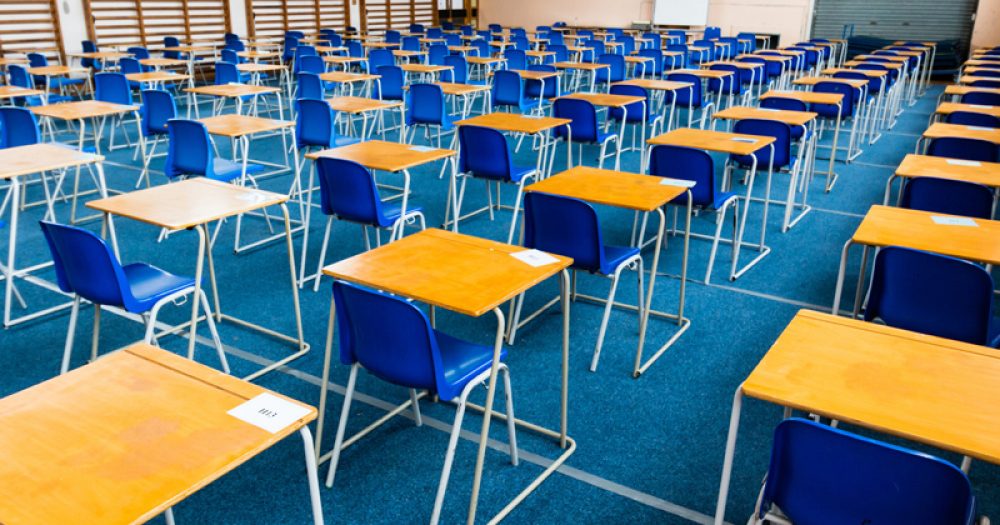The government has released further guidance on how schools must prepare for autumn exams to best protect public health.
This is what you need to know:
1. Keep pupils apart in safe spaces before exams …
Schools are being told to “identify a location where candidates will wait before the exam that can support social distancing between group ‘bubbles’”.
In addition all candidates must be kept separate from other pupils arriving at school.
The guidance tells schools it must make sure there “is a plan to manage candidates leaving the room and site” – taking into account different exam finishing times and extra time for some pupils.
These considerations also apply in private exam centres or “wherever the exams are taking place” and schools must ensure candidates maintain social distancing from other members of the public if necessary.
2. … and maintain 2 metres between ‘bubbles’ in exam rooms
For pupils within the same group ‘bubble’, the minimum distance between candidate chairs “must” be 1.25 metres.
However, “all other candidates, whether in different group bubbles, private candidates or those returning to school or college to take exams, should be seated 2 metres apart from each other.”
Invigilators are allowed to walk up and down aisles between desks, but “there must also be points in the room where an invigilator can stand at least 2 metres from the nearest desks and see all the candidates in the room”.
3. No limit on candidate numbers – but keep windows open
While there is no overall limit on the number of candidates who can sit in a room, “as long as desks are correctly spaced”, the guidance advises the opening of windows and doors for ventilation.
It states: “Good ventilation is important and you should maximise this wherever possible”
4. Schools must keep contact info for NHS Test and Trace
The guidance advises school leaders will need to “collect and keep” contact information for candidates and invigilators “so that you can share it with NHS Test and Trace if needed”.
The government warns this is “particularly important for any external visitors” such as invigilators and candidates not enrolled at the school, with schools advised to cross reference contact details with a prepared seating plan.
5. Exam rooms must be cleaned after each exam
Frequently touched surfaces, including the backs of chairs where candidates pull chairs out to sit, should be cleaned after every exam.
The guidance adds: “Rooms do not need to be left empty between exams, provided they are cleaned properly each time.”
6. No face coverings requirement …
According to the guidance, candidates and invigilators do not need to wear face coverings – unless they want to.
However, they “should wear face coverings in communal areas if the exam centre is in an area of local intervention”.
7. … but invigilators must minimise contact with others
Invigilators are allowed to move between different schools and colleges, so should therefore “minimise contact and maintain as much distance as possible from other staff”.
Before exams are under way schools must tell invigilators what they need to do to minimise contact and maintain as much distance as possible from other staff.
In addition the guidance states “invigilators do not need to wear gloves when collecting exam scripts”.
8. Stand alongside candidates rather than face to face
The government says schools “should advise invigilators and other staff to stand alongside candidates when interacting with them, rather than face to face”.
For encounters “over 15 minutes”, such as providing individual support, staff are advised to maintain a two metre distance or consider using a separate room from other candidates.
If a two metre distance cannot be maintained “they should avoid close face to face contact and minimise time spent within one metre of others.”
However, the guidance includes the caveat that “these arrangements may not be possible when working with some candidates who have complex needs, in which case these candidates’ educational support should be provided as normal during exams”.








Your thoughts